Cosmonautics has a limitless future, and its prospects are endless, like the Universe itself (S. P. Korolev)
October is the month of space travel.
October 4 1957 of the year the royal "seven" took to the velvet-black sky of Baikonur "Sputnik-1", opening the Space Age in stories our civilization. More than half a century has passed since then - how much has modern spacecraft achieved? Will we get to the stars soon?
I bring to your attention a short story about the most complex, interesting and exciting interplanetary expeditions of Humanity. The review intentionally does not include the landing of Americans on the moon - there is no need to inflate a meaningless argument, everyone will still have his own opinion. In any case, the greatness of lunar expeditions pales before the exploits of automatic interplanetary probes and people who had a hand in the creation of this amazing technique.
Cassini - Huygens
Developers - NASA, European Space Agency
Launch - October 15 1997.
The goal - the study of Venus and Jupiter from the flight path. Entry into orbit of Saturn, landing of the Huygens probe on Titan.
Current status - mission extended to 2017 year.
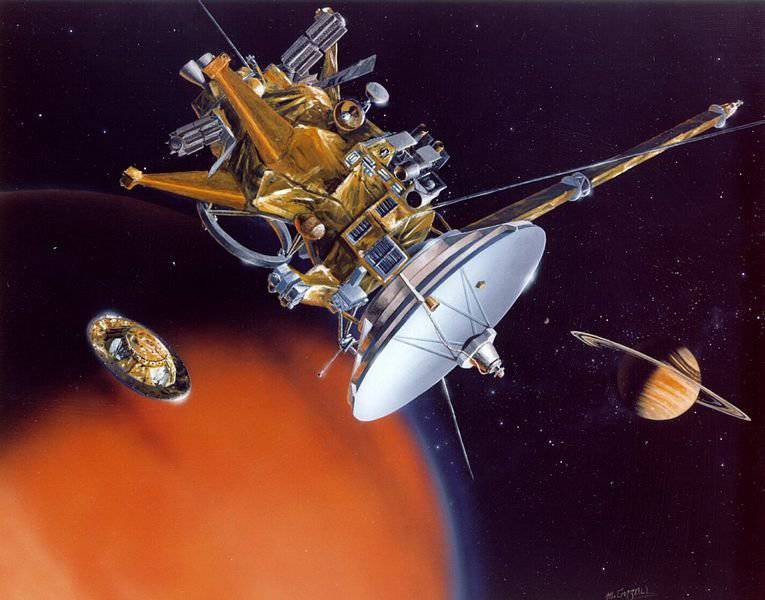
On that fateful night, we slept quietly and did not know that the 5-ton interplanetary station Cassini swept over our heads. Launched in the direction of Venus, she, two years later, returned to the Earth again, gaining by that time the speed of 19 km / s (relative to the Earth). The worst thing was that on board the Cassini there were 32,8 kg of weapons-grade plutonium necessary for the operation of three radioisotope RTGs (due to the large distance from the Sun, it was impossible to use solar batteries in Saturn's orbit).
Fortunately, the gloomy forecasts of environmentalists were not justified - the station quietly passed at a distance of 1200 km from the planet and, having received a gravitational impulse, set off towards Jupiter. There, she once again received acceleration and three years later, July 1 2004, successfully entered the orbit of Saturn.
The "star number" of the entire mission was the separation and landing of the Huygens probe on Titan.
Saturn’s largest satellite is larger than the planet Mercury and is surrounded by a powerful gas envelope that has long attracted the attention of earth scientists. The average temperature on the surface is minus 170-180 ° С, but in the underground reservoirs the simplest forms of life could well have developed - the spectrometers show the presence of hydrocarbons in the clouds of Titan.
Well, let's see how everything turned out in reality ...
... "Huygens" flew into the orange abyss until it plopped into the soft dirt on the shore of a methane lake with floating ice floes from frozen ammonia. The nightmare landscape was supplemented with oblique streams of methane rain.
Titan became the fourth celestial body, on the surface of which the object created by human hands fell.
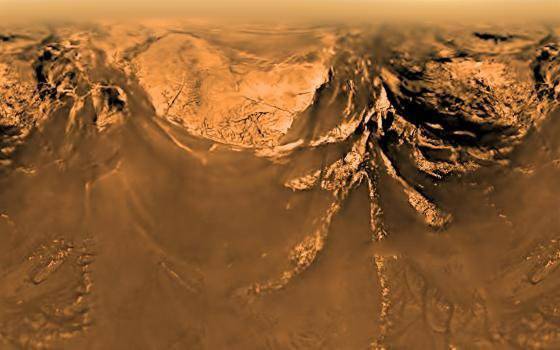
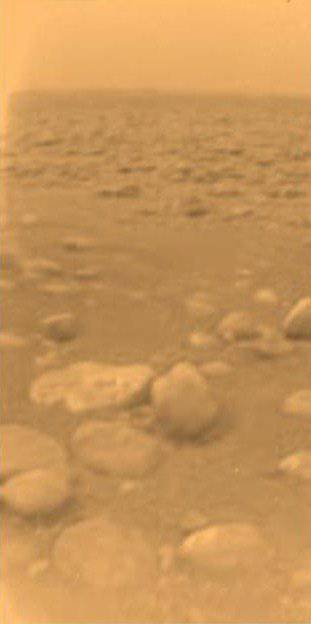
We were greeted by cold and darkness.
Slowly drove crazy
Fog and piercing wind.
Panoramas of Titan from a height of several kilometers and on the landing site of the Huygens probe. In total, the probe managed to transfer 474 megabytes of various information, including several sound files. Following the link you can hear the sound of the wind in the atmosphere of a distant celestial body:
http://esamultimedia.esa.int/images/huygens_alien_winds_descent.mp3
As for the Cassini station itself, the probe is still operating in Saturn's orbit — the most amazing plans are being expressed for its further use: from sending Cassini to Uranus, Neptune or Kuiper belt objects to bringing the probe to the collision path with Mercury. The possibility of flying through the rings of Saturn is also discussed, and if the probe does not break on ice fragments, experts suggest continuing the deadly flight, having made a leap into the upper layers of the atmosphere of Saturn.
The official version provides for less daring maneuvers - the transfer of the apparatus to an elongated orbit and the continuation of the mission to study the vicinities of the gigantic planet.
Vega
Developer - Soviet Union
Launch - December 15 1984 ("Vega-1"), December 21 1984 ("Vega-2")
The goal - the study of Venus and Halley's comet.
Current status - the project has been successfully completed.
One of the most complex and exciting space expeditions to the world of monstrous heat and eternal twilight.
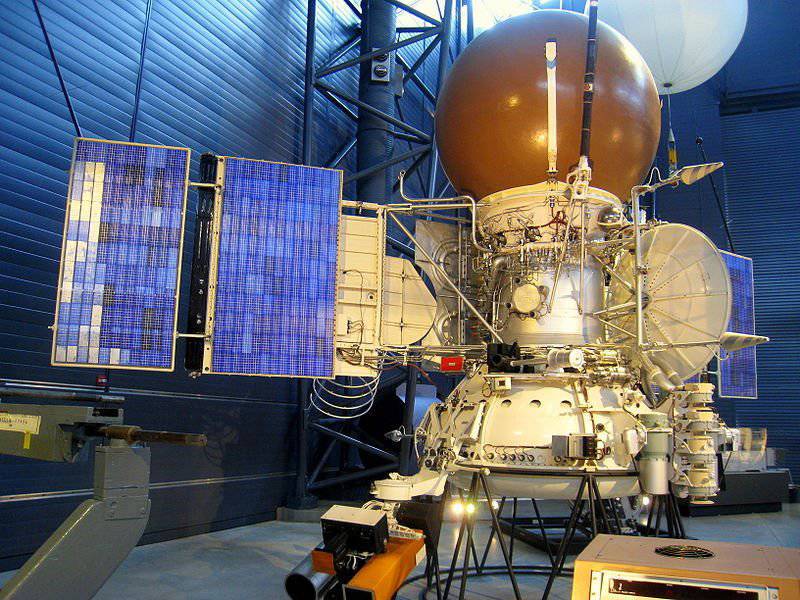
In December, 1984 from Baikonur went to meet the stars two Soviet stations - five-ton machines of the Vega series. Each had an extensive scientific program, which included the study of Venus from the flight path, as well as the separation of the landing module, which, slowing down in the atmosphere of Venus, was divided into two research modules - a sealed landing gear made of strongest steel and a fantastic balloon for studying the atmosphere of the planet.
Despite its alluring brilliance at the predawn hour, the “Morning Star” is a hellish brazier shrouded in a dense carbon-dioxide atmosphere, heated to 500 ° Celsius. At the same time, the pressure on the surface of Venus reaches 90-100 of terrestrial atmospheres - like in the ocean at a depth of kilometer 1! The landing module of the Vega station worked in such conditions for 56 minutes - until the terrible heat burned through the heat protection and destroyed the fragile probe filling.
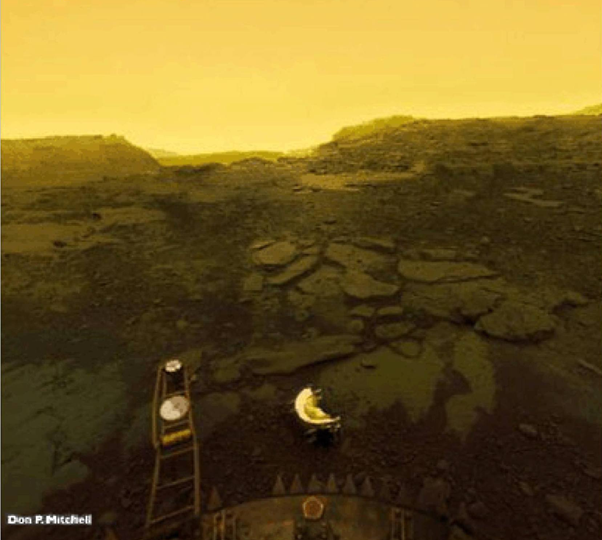
Balloon probes lasted longer — at an altitude of 55 km above the surface of Venus, the atmospheric parameters look quite adequate - the pressure 0,5 of earth's atmospheres, temperature + 40 ° С. The duration of the probes was about 46 hours. During this time, each of the balloons flew in streams of a raging 12 000 hurricane km above the surface of Venus, controlling temperature, pressure, illumination, visibility range and speed of movement of air masses along the flight path. Coming out on the night side of Venus, the devices were lost in the midst of lightning flashes of a thunderstorm front.
The Venus probes died, and the Vega mission was far from complete - the flight stages of the probes, after separating the landing modules, entered a heliocentric orbit and continued their way in outer space. All circumstances evolved well. Ahead was a meeting with the comet Halley.
A year later, in March 1986, both vehicles passed at a distance of just 8030 and 8890 km from the nucleus of the famous comet, transferring 1500 images and a lot of scientific information, including data on the evaporation rate of the substance from the ice surface of the nucleus (40 tons / second).
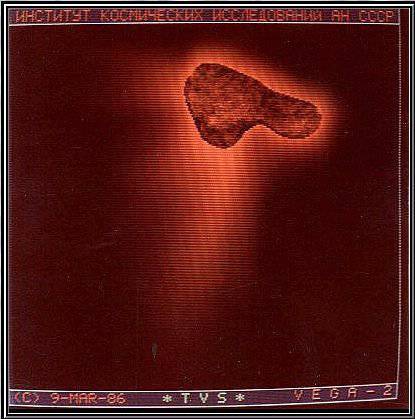
The speed of approach of the comet and Vega vehicles exceeded 70 km / s - miss the probes by one hour and they would deviate from the target by 100 thousand km. The situation was complicated by the impossibility of predicting the comet's trajectory with the required accuracy - on the days of convergence with the space fugitive 22 of the USSR Observatory and Astrophysical Institute of the USSR, the course of Halley's comet was continuously counted to bring Vega as close as possible to its core.
Currently, both Vega vehicles are still drifting in an inactive state in heliocentric orbit.
MESSENGER (MErcury Surface, Space ENvironment, GEochemistry, and Ranging)
Developer - NASA
Launch - 3 August 2004.
The goal is to enter the orbit of Mercury.
Current state - mission is active.
None of the spacecraft has ever moved along such a bizarre trajectory: during its flight, the Messenger performed six gravitational maneuvers, alternately moving closer to the Earth (once), Venus (twice) and Mercury (three times). Despite the apparent closeness of this planet, the flight to Mercury took six and a half years!
The elusive Mercury is one of the most inaccessible celestial bodies. Very high orbital speed - 47,87 km / s - requires huge energy consumption to compensate for the difference in speed of a spacecraft launched from Earth (the orbital speed of our planet is “only” 29,8 km / s). As a result, to enter the orbit of Mercury it was necessary to type "extra" 18 km / s! None of the modern launch vehicles and accelerating units turned out to be able to give the apparatus the necessary speed - the extra kilometers per second were gained by gravitational maneuvers in the vicinity of celestial bodies (this explains the complex trajectory of the probe).
The Messenger was the first of the spacecraft that became an artificial satellite of Mercury (before that, our acquaintance with this planet was limited to data from the Mariner 10 probe that flew three times near Mercury in the 1974-75 years)
One of the main dangers of the Messenger expedition is overheating - on the orbit of Mercury the intensity of solar radiation is more than 10 kilowatts per 1 square. meter!
To protect against the intolerable heat of a nearby star, the probe was equipped with a heat shield measuring 2,5x2 meters. In addition, the device is wrapped in a multi-layer “fur coat” of thermal insulation with a developed system of radiators - but even this is hardly enough to radiate excess heat into the space during a short night when the probe hides in the shadow of Mercury.
At the same time, proximity to the Sun provides its advantages: to provide the probe with energy, two short, 1,5-meter “wings” of solar batteries are enough. But even their power turned out to be redundant - the batteries are capable of producing more than 2 kW of electricity, while 640 W is enough for normal operation of the probe.
Hayabusa ("Falcon")
Developer - Japanese Space Agency
Launch - 9 May 2003
The goal - the study of the asteroid 25143 Itokawa, the delivery of asteroid soil samples to Earth.
Current status - mission completed 13 June 2010 of the year.
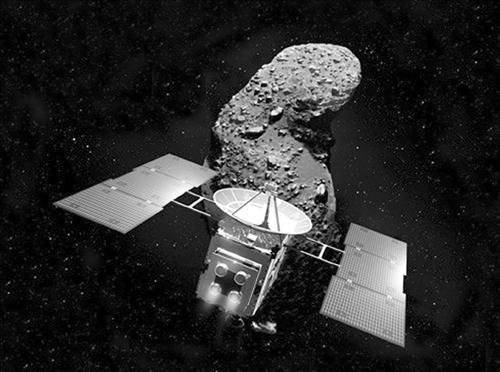
The success of this mission hung literally in the balance: a solar flare damaged the solar panels, the cosmic cold knocked out two of the three probe gyroscopes, the first time the Japanese attempted to get close to the asteroid, the Japanese lost the mini-robot Minerva - the kid ricocheted off the surface and flew into outer space . Finally, during the second rendezvous, the onboard computer crashed - Hayabusa hit the surface of a celestial body, damaged an ion engine, and lost orientation.
Despite such blatant failures, the Japanese Space Agency did not lose hope of the probe returning to Earth. The specialists restored the communications and orientation of the spacecraft, reset the on-board computer. In February, 2009, they managed to start the ion engine and the final maneuver to send the device to Earth.
13 June 2010, a capsule with microscopic soil particles was safely delivered to Earth. Asteroid 25143 Itokawa became the fifth celestial body, on the surface of which was visited the spacecraft created by human hands. And the brave Japanese "Falcon" - the sixth spacecraft that delivered to Earth samples of matter from space (after the "Luna-16", "Luna-20", "Luna-24", as well as the devices "Genesis" and "Stardust").
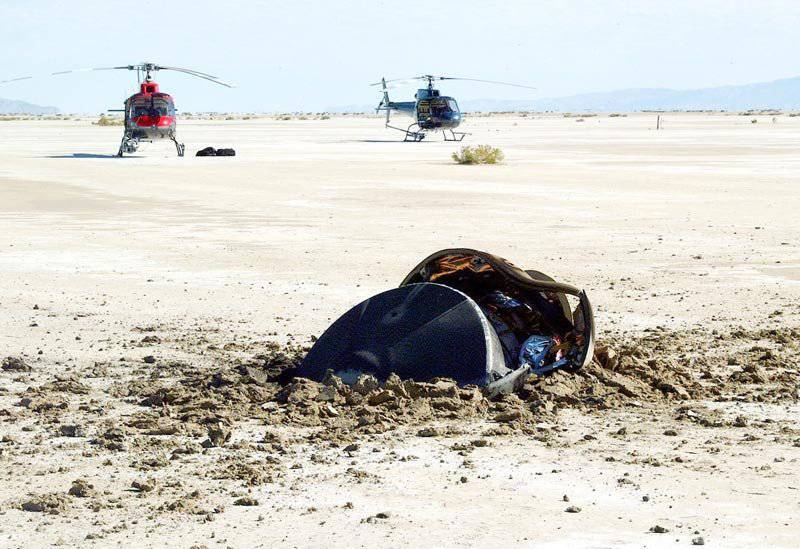
Voyager
Developer - NASA
Launch - 20 August 1977 (Voyager 2), September 5 1977 (Voyager 1)
The goal is to study the systems of Jupiter, Saturn, Uranus and Neptune from the flight path. Mission extended to study the properties of the interstellar medium.
The current state - the mission is active, the vehicles have reached the borders of the Solar System and continue their endless journey in space. It is planned to keep in touch with them for as long as possible.
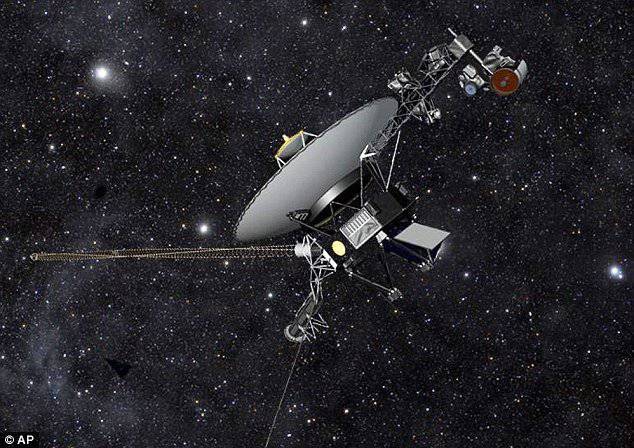
At the beginning of the 1970-ies, the US Congress, shuddering under the blows of the economic crisis, almost "ruined" a unique space expedition. This happens once in 175 years - all the outer planets line up next to each other in the same sky sector. Parade of planets!
As a result, the inhabitants of the Earth have a rare opportunity to "ride" throughout the solar system and during one expedition visit Jupiter, Saturn, Uranus and Neptune. At the same time, to do this along the most advantageous trajectory - the gravitational field of each of the giant planets will “bounce” the probe towards the next target, thereby increasing the speed of the probe and reducing the duration of the entire mission to 12 years. Under normal conditions, without the use of gravitational maneuvers, the path to Neptune would stretch for 30 years.
However, the congressmen flatly refused to allocate funds for space exploration - the Grand Tour expedition was in jeopardy. The distant gas giants will disperse like ships at sea - Uranus and Neptune swim around the Sun slowly and take up a position that is convenient for “interplanetary billiards” only in the middle of the XXII century. Only the trick of the NASA management to rename the Mariner 11 and Mariner 12 devices into the Voyager series devices, as well as the rejection of two other Grand Tour program launches, saved the program and realized the cherished dream of everyone interested in space. .
Over the 36 years of flight, these machines were lucky to see such a thing that even the wildest dreams of science fiction writers cannot compare with.
Space scouts swept over the edge of the clouds of the giant planets, inside each of which could fit on the 300 globes.
They saw volcanic eruptions on Io (one of the “Galilean” satellites of Jupiter) and electric storms in the rings of Saturn — flashes of thousand-kilometer lightning lit up the shadow side of the giant planet. Enchanting spectacle!
Voyager-2 is the first and so far the only Earth probe that has flown around Uranus and Neptune: distant ice worlds, where 900 times less light than Earth's orbit, and the average surface temperature is within minus 214 ° Celsius. The probe for the first time saw a phenomenon absolutely impossible under terrestrial conditions - cryovolcanism. Instead of hot lava, volcanoes of distant worlds erupted liquid methane and ammonia.
Voyager-1 transmitted an image of the Earth from a distance of 6 billion kilometers - Humanity managed to look at the solar system from the side, outside the ecliptic plane.
25 August 2012, the Voyager 1 probe for the first time recorded the sound of wind in an interstellar medium, becoming the first of man-made objects to go beyond the limits of the solar system.
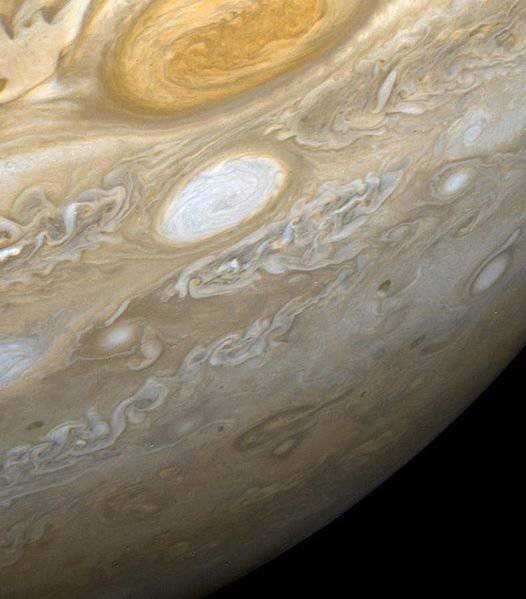
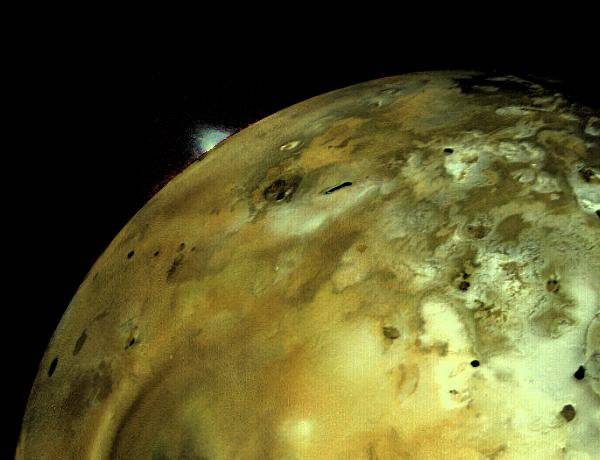
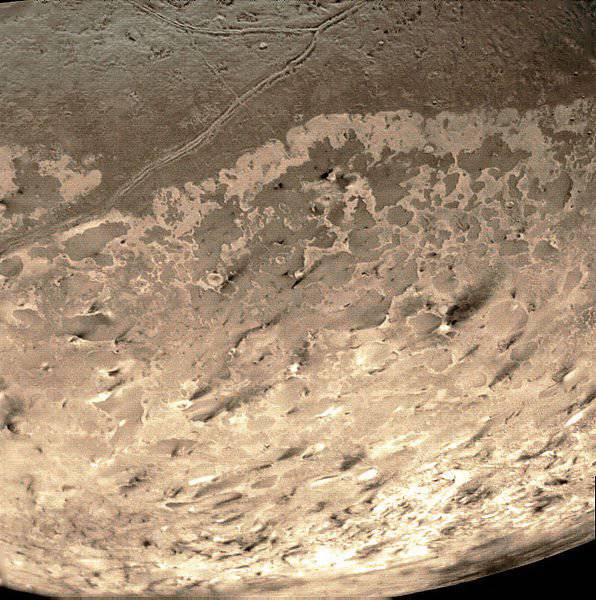
In the scientific literature, they are no longer ashamed to call Voyagers spacecraft - both vehicles have gained the third cosmic velocity and will certainly reach the stars. When? For unmanned probes, it does not matter - after 10-15, the last sparks in their plutonium “hearts” will go out for years, and the time for Voyagers will stop. Asleep forever, they will disappear in the vast expanses of the starry ocean.
New Horizons
Developer - NASA
Launch - 19 January 2006
The goal is to study the dwarf planets of the Pluto-Charon system from the flight path.
Current status - the machine will reach the goal of 14 June 2015 of the year.
What an injustice! Nine long years of flight and only nine days for a close acquaintance with Pluto.
At the time of the closest approach of 14 on June 2015, the distance to the planet will be 12 500 km (30 is closer than the distance from Earth to the Moon).
The meeting will be short: the New Horizons probe will rush past the most mysterious celestial body, still not surveyed by spacecraft from Earth, and disappear into interstellar space at 14,95 speed, becoming the fifth spaceship of Human civilization (after the probes Pioneer 10,11 "and" Voyager-1,2 ").
It is too early to draw any conclusions - the expedition has not reached its ultimate goal. At the same time, the probe does not lose time in vain - using its cameras, spectrometers and space particle detectors, New Horizons periodically studies oncoming celestial bodies: planets, satellites, and asteroids. Equipment testing is regularly conducted, on-board computer firmware updates are updated.
As of October 2013, the probe is at a distance 750 million km from the intended target.
In addition to the 7 of the most advanced scientific instruments, there is a special “cargo” on board the probe - a capsule with the ashes of astronomer Clyde Tombo, the discoverer of Pluto.
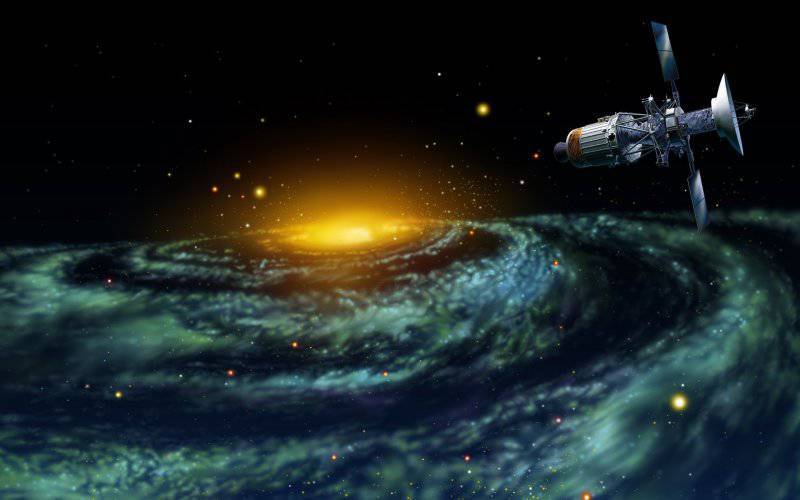
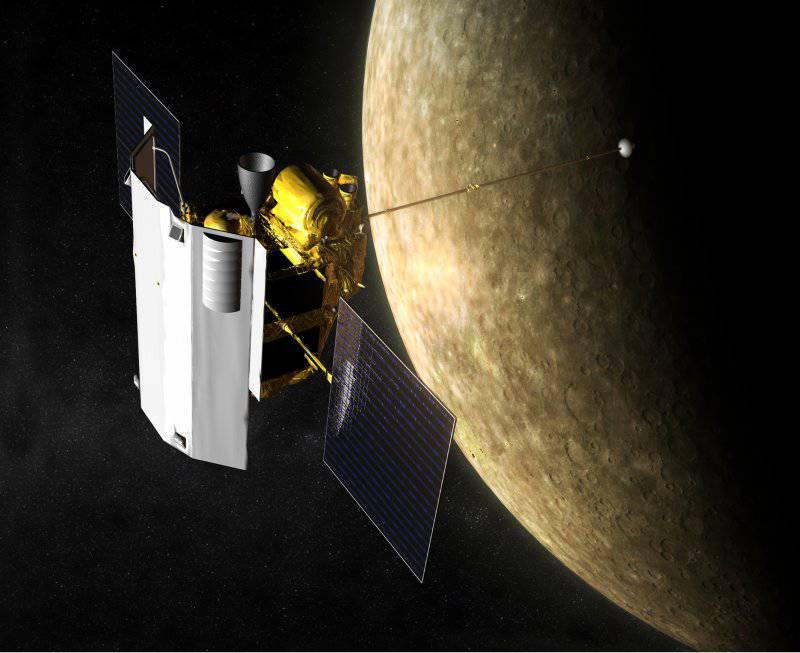
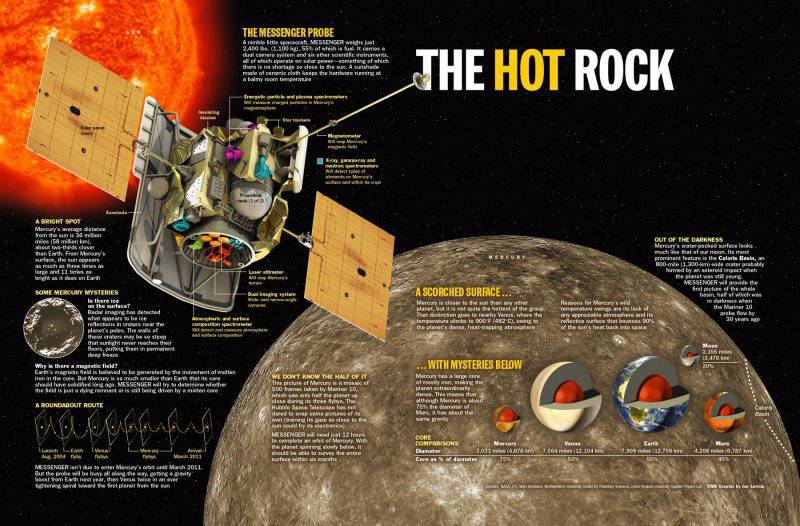
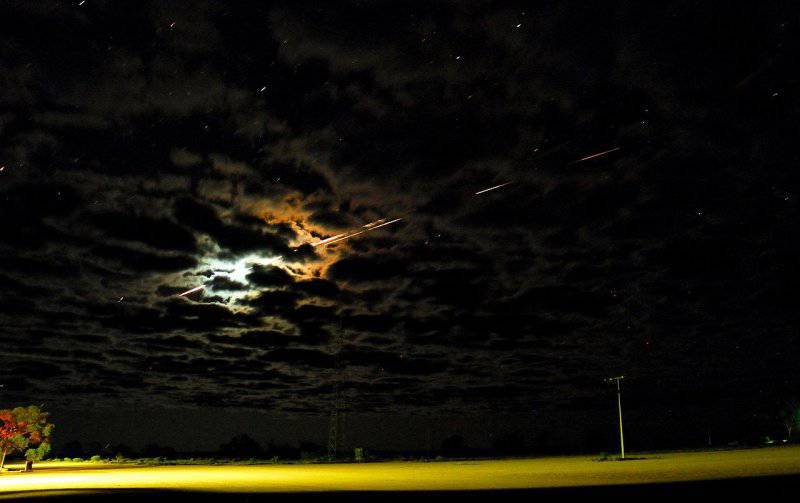
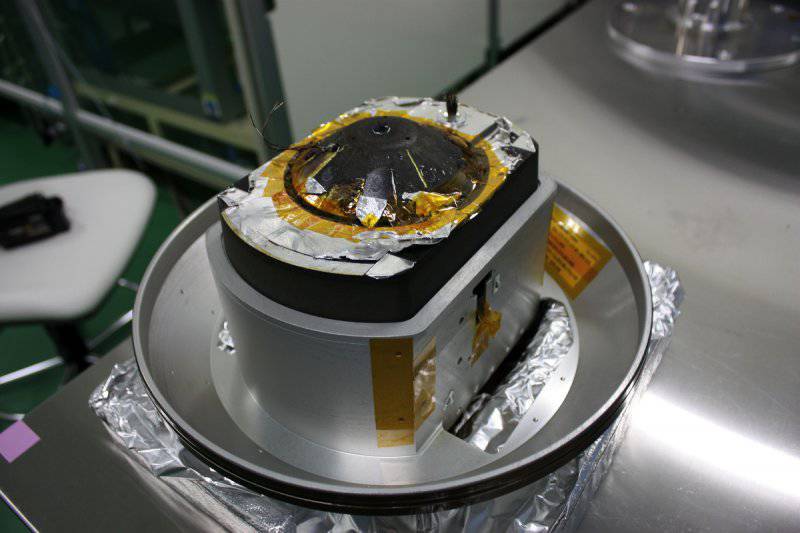
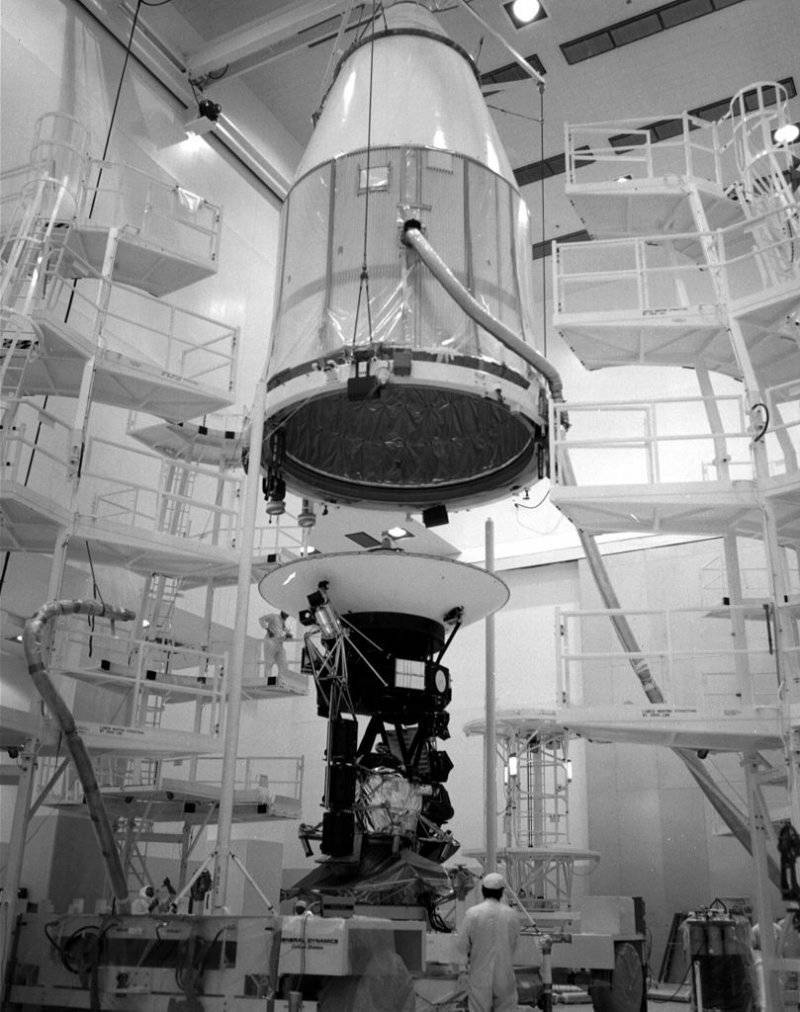
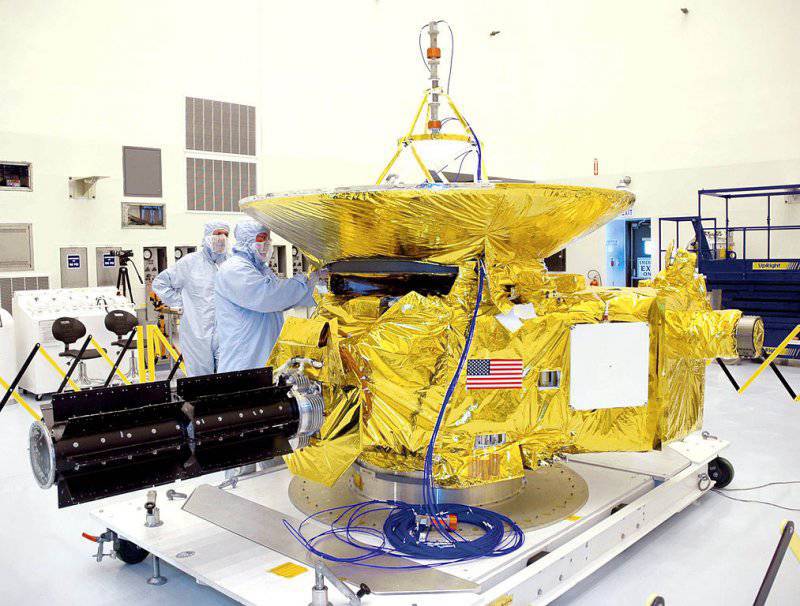
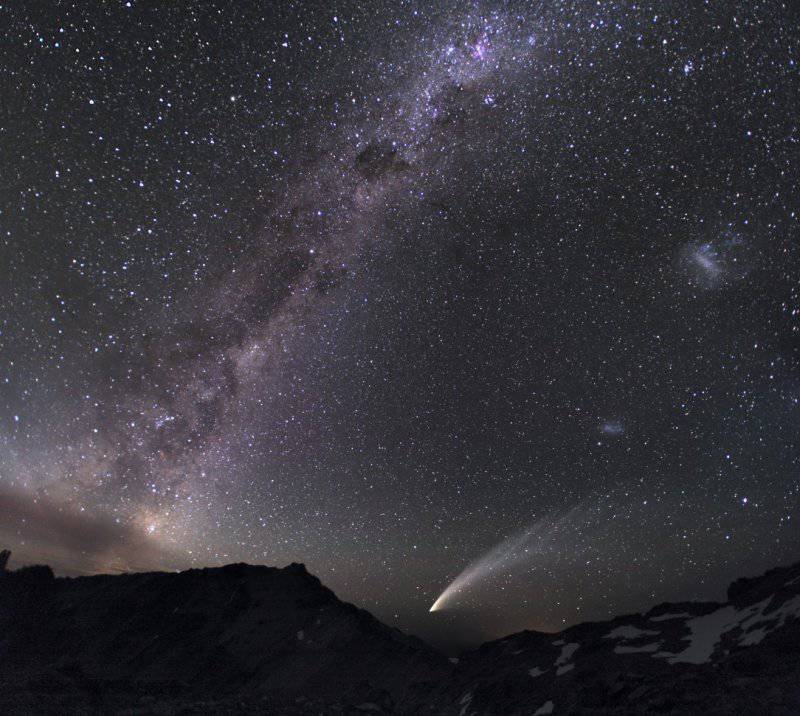
Information